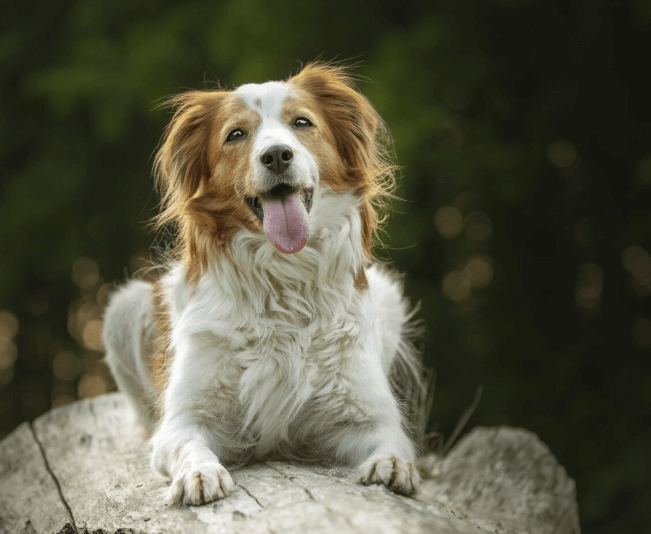As a responsible pet owner, it’s only natural to worry when your furry friend gets a cut, scrape, or minor wound. One of the first things many people consider is using a household first-aid staple—Neosporin. But can you safely put Neosporin on a dog? The short answer: yes, but with caution.
Let’s break down everything you need to know, from safe usage to better alternatives—so you can keep your dog healthy and healing safely.
What Is Neosporin?
Neosporin is an over-the-counter topical antibiotic ointment commonly used for minor cuts, burns, and skin irritations. It typically contains three antibiotics:
- Bacitracin
- Neomycin
- Polymyxin B
These ingredients work together to prevent bacterial infections and speed up healing in humans. However, dogs are not humans—and this makes all the difference.
Is Neosporin Safe for Dogs?
Yes, Neosporin can be used on dogs—but only under certain conditions. When applied correctly, it can help prevent infections in small, superficial wounds. But improper use or application to large or deep wounds can cause complications.
Use Neosporin only if:
- The wound is small and not bleeding heavily
- The area is clean and dry
- Your dog cannot easily lick the ointment off
- There are no signs of deeper injury or infection
Applying a very thin layer to a clean cut may help protect it from bacteria and support the natural healing process.
Important Risks and Warnings
While Neosporin is generally safe for minor injuries, there are several risks you should be aware of before reaching for the tube.
1. Ingestion Risk
Dogs are curious by nature—and if they can reach the ointment, they’ll likely lick it. Ingesting Neosporin can lead to stomach upset, vomiting, diarrhea, or worse.
2. Allergic Reactions
Some dogs may develop contact allergies or sensitivities. Watch for signs like:
- Redness or swelling at the site
- Itching or scratching
- Hives or rash
If you see any of these symptoms, wash the area and discontinue use immediately.
3. Neomycin Concerns
Neomycin, one of the antibiotics in Neosporin, has been linked to side effects in dogs when injected or used improperly. Though the risk is far lower with topical use, it’s still something to be cautious about—especially if used frequently or on large areas.
When Not to Use Neosporin on Dogs
Avoid using Neosporin in the following situations:
- On deep puncture wounds or lacerations
- Near the eyes, nose, or mouth
- On burns, bites, or surgical incisions
- If your dog shows signs of infection, such as pus or foul odor
- If the dog licks or chews excessively at the area
If any of these apply, it’s time to consult your veterinarian.
How to Properly Apply Neosporin to a Dog
If you’ve determined the wound is minor and your vet gives the okay, follow these steps:
- Clean the area gently with warm water and a soft cloth.
- Dry the skin thoroughly before applying anything.
- Apply a very thin layer of Neosporin to the affected area.
- Prevent licking by using a cone (Elizabethan collar) or bandage if needed.
- Monitor the site over the next 24–48 hours for signs of improvement or irritation.
Better Alternatives to Neosporin
In 2025, many pet-specific products are available that are safer and more effective than human medications. Consider these instead:
- Pet-formulated antiseptic sprays and ointments: These are made specifically for dogs and are safe if licked in small amounts.
- Veterinarian-recommended wound care gels: These often contain soothing ingredients like aloe and are free from potentially harmful antibiotics.
- Natural remedies like colloidal silver or manuka honey: These have antibacterial properties and are safe when used correctly.
These alternatives offer peace of mind and reduce the risks of allergic reactions or toxicity.
When to Call the Vet
If your dog’s wound looks worse instead of better, don’t delay. Professional veterinary care is essential if you notice:
- Swelling, pus, or oozing from the wound
- Signs of pain or limping
- Lethargy or changes in appetite
- Fever or unusual behavior
- Excessive licking or chewing of the site
Even what looks like a minor scrape can become infected if not treated properly. When in doubt, always check with your vet.
Key Takeaways
- You can use Neosporin on dogs, but only for very minor wounds—and only if your dog can’t lick it off.
- Never use it on serious injuries or near your dog’s face or mouth.
- Monitor for signs of allergy or irritation.
- There are safer, pet-specific alternatives now widely available.
- Consult your veterinarian before starting any treatment, even for small issues.
Final Thoughts
Neosporin might be a quick fix in your own first-aid kit, but your dog deserves tailored care. While it’s not inherently dangerous for minor wounds, it’s not the best option for every situation. In today’s world, with so many pet-safe and vet-approved alternatives, you’re better off choosing solutions made specifically for dogs.
Your pup’s health and safety come first—and now you’re equipped to handle minor wounds the right way.
Visit our website for more. Click here: “Get Quick Answer“.


